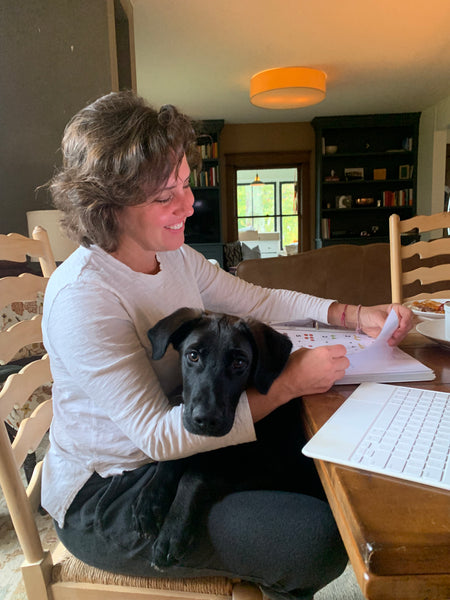Dr. Seth Poppino built his big white house in New Wilmington, Pennsylvania in 1849. He built a smaller detached two story structure beside it, ‘The Little House’ as it came to be known, as a place to operate his successful medical practice.

Earliest known photograph of 108 North Market Street
I am currently writing to you from Dr. Poppino’s office, upstairs in The Little House. Mercantile 1931 is directly below. Guests are laughing, Vince Guaraldi is jangling. It sounds like Christmas.

Photograph of restored Tavern on the Square & Mercantile 1931
It’s hard to picture what Christmas was like 175 years ago. Difficult for me, but not difficult for my neighbors just down the way. While I can’t imagine Dr. Poppino’s Christmases of so long ago, I only have to look out the office window at the hillside of white houses turning purple as the December sun sinks lower to trigger my imagination.
The neat Amish homes dotting New Wilmington’s farm land are mostly dark by 5 o’clock with the exception of a gas lamp on the main floor.
I can imagine the sound of children talking about a new doll or figurine, the low voices of mum or da. Laughter, if that’s a family trait. Quiet if it is not. Hush surrounds it all. Wind against the house. The whisper of snow falling upon snow, only audible if you hold still and listen with your eyes. But there aren’t so many distractions that you miss it.
Despite growing up in Western Pennsylvania, I’d not heard of New Wilmington. Just like Seth Poppino, Matt and I are transplants. Poppino from Orange County, New York, Matt from Orange County, California. When we moved here from California, Matt asked me how I could possibly not know that there were Amish communities in Western, PA. I told him that the focus had always been on Lancaster, a central Pennsylvania town known for Amish furniture stores and quilt shops that hosts close to 10 million annual visitors.

New Wilmington affords you the chance to look into the past, to contemplate a different time. There are people here who still get around by horse and cart. When it’s dark, it’s dark. Some grow a lot of their own food. Most make their own cloths. This isn’t Colonial Williamsburg. This is real. And when you’re here and you hear the sound of hooves and wheels running heavy on asphalt, you know it. Unless you know someone, you don’t go into these people’s homes for demonstrations on how they live. You get glimpses on a Simple Life Tour but you’re an observer, a voyeur. You can still buy quilts and fudge, but this place is authentic. And there is something to that. Something gripping, witnessing true living history.
According to historian William May’s ‘Story of the Tavern on the Square,’ Dr. Poppino did an 1800’s version of a residency in New Wilmington under Dr. Isaac Cowden right before the Amish settled in the area in 1847. He returned to the area after graduating from (now) Case Western University in Ohio.
Something drew him back. Was it the abolitionist church he helped plant? The connection to the community? Whatever it was, he spent the rest of his life in service here, in this quiet country town.
The big white building on the corner of Market Street stood for something in the 1800’s. Progress. Comfort. Stability. Dr. Poppino was there, invested, ready to care for those in need.
That word strikes me just now. 150 years later, we use C.A.R.E as a core value here at The Tavern. Communicate. Ask. Respect…if we do all of these things, and we sincerely care, we will Elevate. Elevate the guest experience, our service, The Tavern’s reputation, this community. What we do matters.

Tavern Founder, Cora Durrast c.1980’s
I’d like to think Dr. Poppino and Tavern Founder, Cora Durrast would be pleased to know that the big white house on the corner is still here. To care. To comfort. We’ve seen 40,000 guests walk through the doors since we re-opened the doors in May. We’ve worked with over 50 small, local (or both) businesses. We have over 30 farm partners. With each visit, each guest is investing in this community. It is a sign of hope and serves as motivation to dig deeper in 2025.





